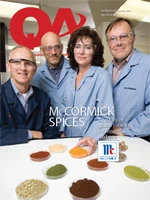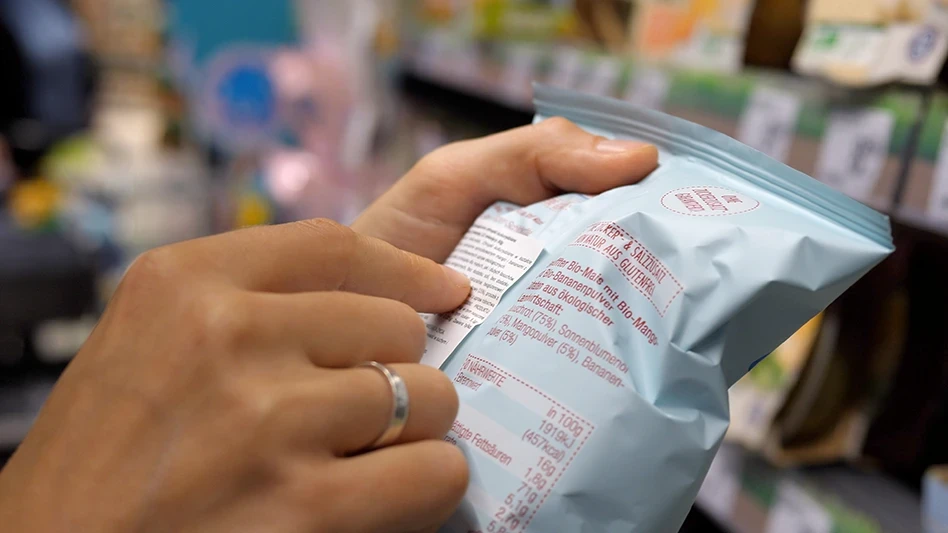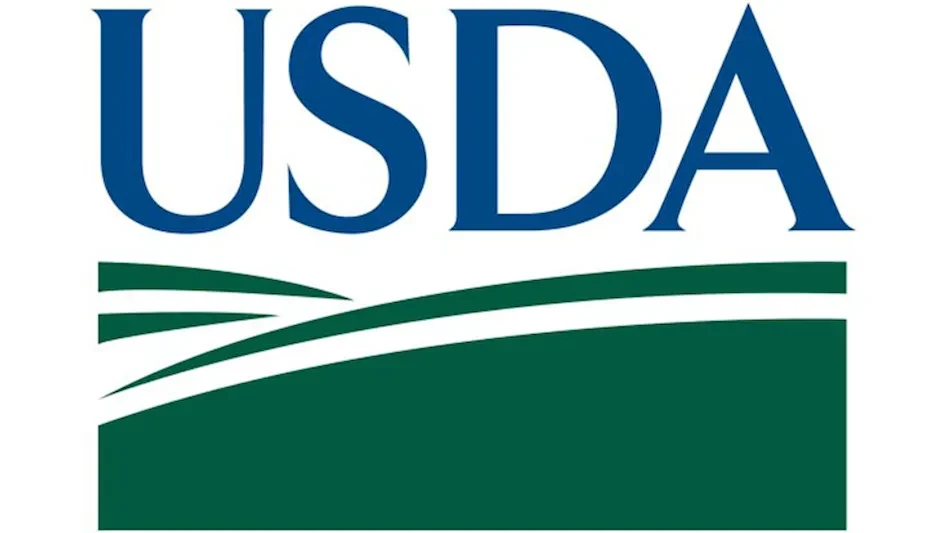That pesky insect buzzing around your food is known by the (mentionable) names of house fly, common fly, filth fly or, simply, the fly. But by any name, this familiar flying Musca domestica is a plant sanitarian’s nightmare.
With fermenting vegetables and garbage refuse among its favorite feeding and breeding sites, there is little doubt that this common fly will pass along pathogens and disease organisms when it lands on a food, food container or food-contact surface. In addition to carrying the bacteria on its "feet," a fly cannot digest solids, so it excretes stomach acids and regurgitates wherever it comes to rest.
The house fly has been shown to carry the disease organisms causing typoid fever, cholera, summer diarrhea, dysentery, tuberculosis, anthrax and ophthalmia as well as parasitic worms. Even more relevant to food processors, this filth fly has been implicated as a vector of the food-poisoning bacteria E. coli and Salmonella.
Under most conditions of a typical urban environment, no one should have to suffer flies indoors. But with its ever-present attractants for flies, a food plant often needs to go a step above the norm to keep these filth flies at bay. To do so, a six-step approach is recommended:
1. Sanitation. Pure and simply, sanitation is the key in eliminating fly infestations, because it removes the odors that attract the flies and the food supply that enables them to live and breed. Sanitation should be maintained year round in any plant, but must be especially thorough during warm weather when fly activity is at its peak.
2. Cultural measures. Practices should be altered or designed to minimize potential breeding sites around buildings. When ample food and egg-laying sites are available, most adult flies will remain near their breeding habitat. Thus, sanitation again comes into play, with external cleaning and sanitation critical to limiting fly numbers near the plant by reducing fly attractants. In addition, whenever possible and permissible, a plant should ask its pest management service provider to check adjacent properties for fly breeding sources. While flies can travel long distances, most flies found in and around a building originate from breeding sources on or near the property.
3. Exclusion. Despite your best sanitation efforts, flies are attracted to plants because of odors and preferred temperatures that radiate from the building. Thus, doors should be equipped with self-closing devices; doors and windows be well-maintained at all times; cracks sealed; and care taken to keep employees from propping doors open during breaks.
4. Mechanical Control. Devices to trap or exclude flies include those such as:
- Air doors – create a wall of strong air to keep flies from entering. But it is critical that these be correctly installed, or they can suck flies into the building.
- Insect light traps (ILT) – Because flies are attracted to light, ILTs can provide good round-the-clock control where permitted by law. In addition, examination of an ILT’s insect catch can augment its purpose as a monitoring tool.
- Baits – can be effectively used outside around trash areas and in livestock operations. Placing bait inside a fly station can protect the bait and extend its life.
- Traps – can provide non-toxic fly control in exterior areas such as loading docks and livestock operations where flies can be a major issue. Traps are available in many types, styles and sizes.
5. Legal Issues. In addition to federal regulations and GMPs, many states, counties, cities and towns have and enforce their own specific health codes containing sections on prohibition of vermin. It can be advantageous to be proactive in forming a working relationship with local enforcement officials and participating in health officer associations.
6. Insecticide treatment. Treatment with insecticides should be performed only after the consideration and implementation of the previous five initiatives. In most cases, application will be limited to specific sites where adult flies land to rest, and, in food plants, application is further limited by label restrictions for food areas and/or food-contact surfaces.
Excerpted from "Handbook of Pest Control" by Arnold Mallis (GIE Media).
*****
Eliminating to the Last Fly
Practical Solutions by Ole Dosland
Although the House Fly is one of the most common flies in the U.S., the term "flying insects" refers to much more than just one species. In fact, a significant majority of insects fly, especially around sunset. As spring turns to summer, the temperatures rise to those that are optimal for many flying insects – 75oF to 90oF. Combine that with desirable food, water and shelter, and flying insects can populate very quickly.
What are some basics for you to emphasize this summer to get the biggest bang for your busy minute? What are some practical solutions to prevent or decrease the presence of flying insects in general?
Drive by. Food plant "drive bys" can show systematic flaws in managing flying insects. To determine where your plant may have flaws, drive by and view it through the eyes of the flying insect.
Do you see … open unscreened doors?
Do you smell … odors?
Are there lights …near the openings?
Is wind direction … moving toward lights, odor sources, openings?
I drive by food plants with these flaws and wonder how the plant can produce a clean, wholesome food product. And if these are visible from the outside, what other QA systematic flaws are present?
Prevention. A flying insect issue in a food or beverage plant is a symptom that something is not right with one or more of the basics; that a plant practice is attracting the pests and/or allowing them into the plant. Following are some of the most common problems—and solutions:
Problem: Opened/unscreened doors, windows.
Solution: If necessary for air flow, durable screening should be installed. Quick roll-up nylon screens are most effective on dock doors. Automatic closures are effective for frequently used pedestrian doors.
Problem: Not eliminating odor attracters—compactors, dumpsters, sewage.
Solution: Set regular cleaning and sanitizing procedures for these critical areas. Chlorine sanitizes and deodorizes—and helps repel flies.
Problem: White lights on the building, near entries, near air intakes.
Solution: Use high pressure sodium lighting with overhead shielding and position on a perimeter with lights aimed toward the building. Disable lights above most doors.
Problem: Negative air pressure from outside to inside and inside from dirty to clean.
Solution: Conduct a building air flow study, then establish clean, cleaner and cleanest zones to correct airflow direction. Sourcing dirty air into clean zones is a certain microbial hazard.
Problem: Poorly positioned ILTs: too high, near food, in a wind tunnel.
Solution: Do not use power-source proximity for positioning of ILTs, rather extend the power source as needed to install ILTs belt high at open sight lines in non-drafty areas near insect entries.
Problem: Not knowing your pest management technician.
Solution: The service technician knows your facility’s pest pressures. Your pest management program is as good as this person’s delivery. Go to lunch periodically and talk.
Problem: Lack of temperature control.
Solution: The optimum temperatures for flying insects are in the 80s. Whenever possible, modify environments to below 75oF to slow insect development, reduce attraction and extend product shelf life.
Problem: A flying insect buffet—from sewage to dumpster to roof drain to wet mulch to compactor (with negative air) to uncovered trash containers to floor drains to outdated products to food spillage to food production.
Solution: Inspect your plant from the fly’s perspective.
Integrated Pest Management (IPM) is an effective approach which integrates key tactics into a logical program providing long-term solutions to pest problems. Too often, pest control is seen as a reactionary process that requires chemicals to solve a problem, but that is a rather short-term approach. Instead pesticides in food processing plants should be used on a justified need basis and be prescription oriented; which means you apply exactly what is needed where needed.
Following IPM is the best solution for all pests. In addition to the areas covered in relation to house flies, the following can help you can protect your operation against general flying insect activity:
- Implement a master cleaning schedule focused on deep cleaning consisting of a predetermined frequency, method, responsibility and evaluation. Include a focus on rooftops (especially near air intakes) and the entire trash/waste handling process, which are high-risk areas.
- Use team inspections with monitoring techniques to identify infestations before they get out of control. Sticky traps and insect light traps are especially effective as they work 24 hours a day. Seek out the source of insect-active areas where food, water and shelter conditions are present—both indoors and outdoors.
- Keep first in/first out (FIFO) in place. Although FIFO is usually associated with finished products, you should also implement it in areas that house research and development, lab samples, held products and infrequently used ingredients, pallets and packaging supplies.
- Get outside help with a reputable third-party pest management provider. Work with a professional who is knowledgeable in the basics of exclusion, sanitation, inspection/monitoring and FIFO practices.
Managing flying insects is not an easy task during the warm seasons; it requires combining numerous tactics 24/7. The core of managing flying insects effectively is exclusion, sanitation and temperature. Focus on the big three. After all ... one fly is one fly too many.
The author has 30+ years in food quality assurance and is a certified professional instructor. He can be reached at odosland@giemedia.com or 816-436-1627.

Explore the June 2010 Issue
Check out more from this issue and find your next story to read.
Latest from Quality Assurance & Food Safety
- FSIS to Host Virtual Public Meetings on Salmonella Framework
- Climate-Smart Soybeans Enter U.S. Market
- Yoran Imaging Introduces Thermal Imaging-Enabled System for Induction Seal Inspection and Analysis
- GDT Highlights Food Safety Solutions for Food Processing and Packaging Facilities
- FSIS Issues Public Health Alert for Ineligible Beef Tallow Products Imported from Mexico
- Wolverine Packing Co. Recalls Ground Beef Products Due to Possible E. Coli Contamination
- McDonald’s USA, Syngenta and Lopez Foods Collaborate to Help Produce Beef More Sustainably
- Divert and PG&E Announce Interconnection in California to Address Wasted Food Crisis





